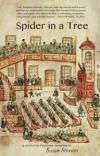 The American Antiquarian Society is an incredible resource for historical research for novelists. Because I wanted to experience the books as physical objects, just as my seventeenth century characters might have experienced them, I got to sit with Elizabeth Pope, Curator of Books, while she held a light beneath a page and explained how the process of papermaking left a grid of marks from wires and chains. She pointed to the place on the Eliot Tracts volume where one buckle had warped the boards of the cover while another, broken early in the collection’s life, had not. As we looked at the Algonquian Bible – or the Eliot Bible -- and the Massachusetts Psalter, I was able to see and touch objects which I knew that both English and Algonquian people had a hand in making and using in the seventeenth century. The Nipmuc printer Wowaus/James Printer, worked on many of these rare and evocative texts. In a book of English grammar from the Mather Library, there was an elaborate signature which may have been young Increase Mather practicing his hand. In The Indian Grammar, there were handwritten marks next to the list of letters to indicate sounds, the work of an Algonquian student.
The American Antiquarian Society is an incredible resource for historical research for novelists. Because I wanted to experience the books as physical objects, just as my seventeenth century characters might have experienced them, I got to sit with Elizabeth Pope, Curator of Books, while she held a light beneath a page and explained how the process of papermaking left a grid of marks from wires and chains. She pointed to the place on the Eliot Tracts volume where one buckle had warped the boards of the cover while another, broken early in the collection’s life, had not. As we looked at the Algonquian Bible – or the Eliot Bible -- and the Massachusetts Psalter, I was able to see and touch objects which I knew that both English and Algonquian people had a hand in making and using in the seventeenth century. The Nipmuc printer Wowaus/James Printer, worked on many of these rare and evocative texts. In a book of English grammar from the Mather Library, there was an elaborate signature which may have been young Increase Mather practicing his hand. In The Indian Grammar, there were handwritten marks next to the list of letters to indicate sounds, the work of an Algonquian student.
In a particularly thrilling moment of archival generosity and abundance, Ashley Cataldo brought me a whole yellow library cart filled with local histories about towns I was researching: Hartford, New Haven, Wallingford, and Stamford. I don’t know if I can convey the excitement and usefulness of having such a richness of material so important to my work available in one place, but it was truly amazing. A story about the strange gravestone of a man who had been lost in the woods in Wallingford became the source of my working title, Lamentation Hill. I later went and found the strange gravestone with its portrait of a beast myself.
Click here to read an excerpt of Susan Stinson's 2013 novel Spider in aTree.
